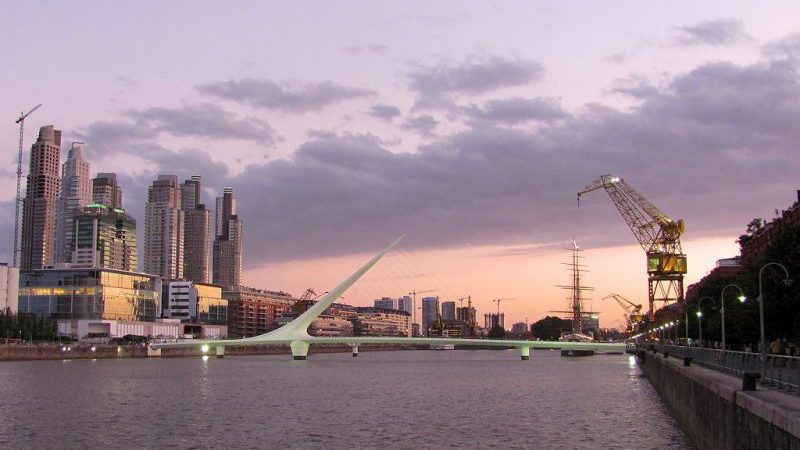At the end of this month, two important meetings will be taking place, at opposite ends of the world: as G20 heads of state meet in Argentina, their representatives will be gathering in Katowice, Poland for the next round of climate negotiations.
What happens in Argentina is crucial for the climate. The economies of the G20 account for 80% of global greenhouse gas emissions – and if these countries don’t move on climate change, we can expect warming of up to 4C by 2100, a catastrophic proposition for our planet and its inhabitants.
The recent report on 1.5C by the Intergovernmental Panel on Climate Change (IPCC) tells us that there is even a big difference in climate impacts between warming of 1.5C and 2C, let alone 4C. This 1.5C goal was the limit set in the 2015 Paris Agreement – but we can only get there if the G20 economies halve their emissions by 2030.
Yet climate change barely features on the agenda in Buenos Aires, despite the warnings of the impact that climate change will have on the global economy, development and global security. Inaction could lead to stranded assets of $20 trillion of upstream energy and power generation – impacts that could be minimized if capital is shifted from carbon-intensive investment.
Argentina accused of caving to Trump by dropping carbon price from G20 talks
In 2017, global economic losses from natural disasters and man-made catastrophes were the highest-ever – amounting to $337 billion. And G20 countries are all vulnerable, particularly the emerging economies of India, Indonesia and Brazil, who are the most exposed to the impacts of climate change.
In our “Brown to Green” analysis of the progress the G20 is making toward a low carbon economy, released this week, we forensically examine the progress of each of these economies, with 80 indicators on decarbonisation, climate policies, finance and vulnerability to the impacts of climate change.
Put together by 14 organisations in more than half the G20 countries, many of them emerging economies, the analysis gives us the kind of transparency that we need to be able to properly assess this progress – and track it over time (this is the fourth iteration of this report).
The results are a mixed bag. There are no really clear leaders: while there are pockets of hope, the overall picture is not exactly encouraging. Emissions are again on the rise, after a slight dip in recent years. Whether this is a trend has yet to be seen.
These countries are still clinging to fossil fuels, which account for, on average, around 82% of the G20’s overall energy mix. G20 countries provided $147 billion subsidies to coal, oil and gas in 2016 – an enormous increase from US$75 billion in 2007, although they did drop 2015-16. But apart from two countries – France and Canada – the G20 overwhelmingly spent more on fossil fuel subsidies in 2016 than the income they got from carbon pricing in 2017.
This kind of independent analysis is important for a number of reasons: under the Paris Agreement there is no mechanism for comparing action, nor for measuring the “bottom up” approach of government pledges against the only agreed “top down” goal – the 1.5C warming limit. This was strongly resisted by many governments in the lead-up to the Paris conference in 2015.
Some governments may not want to know where they are compared with others or may not want the comparison to be public. But the public needs to know and civil society depends on it – it’s important at both a national and international level to have an honest assessment of governments’ climate action.
‘Despair’ as global carbon emissions to hit new record in 2018
So what has happened since Paris? Energy-related CO2 emissions began to increase again in 2017, a worrying statistic. The energy sector’s carbon intensity decreased in 2016, and stalled in 2017, due to a slightly higher share of renewables and other zero-carbon technologies.
In India, Canada and Indonesia, the share of fossil fuels in their energy supply increased 2012-2017, but the UK, China and France managed to reduce theirs.
The Paris Agreement pledges are still lacking – only India is even close to getting onto a 1.5C-compatible emissions pathway, but it still remains wedded to coal. Seven countries are likely to miss their targets, and eight have targets so weak they’ve already achieved them.
Coal remains a strong issue blocking progress, especially in South Africa, Australia and Indonesia, which have the highest emissions-intensity in their power sector, with no plans to phase out coal. Japan is also embarking on a massive coal plant construction exercise.
There is hope in the transport sector, where the UK, France and Japan have strong phase-out plans for fossil fuel cars, but the US and Australia have the highest transport emissions per capita and lack adequate fuel efficiency standards.
Corralling the results of data from 20 countries across 80 indicators is a daunting task – and the choice of such indicators is crucial for understanding where the world stands on climate progress. The results are clear, and worrying: it’s time to pick up the pace.
Prof Dr Peter Eigen is co-chair of Climate Transparency, and the founder of Transparency International
Dr William Wills is research coordinator at the Federal University of Rio de Janeiro’s CentroClima programme, and an international consultant to international institutions such as the World Bank and UNDP
Dr Jiang Kejun is director of the Energy Research Institute, China, and an IPCC lead author
